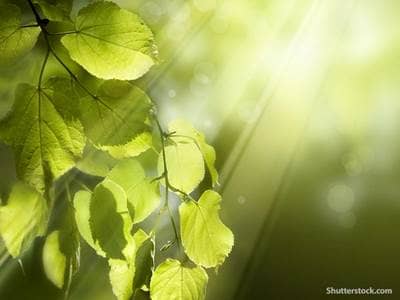
While our human bodies physically stop growing at some point in life, plants don’t stop growing. Plants continue to develop while they are living.
Plants signify our spiritual growth, which can continue to flourish while we are living.
This plant lesson is added to other lessons. We’ve long known the benefits of plants that provide nutritional, aromatic, and medicinal value. Plants clean the air, by taking carbon dioxide from the atmosphere and releasing oxygen.
Did you know that a plant leaf isn’t really green, but the leaf reflects the green wavelength of light?
Equally interesting is the fact that 21st century scientists are discovering that plants exhibit mindfulness. Plants aren’t docile or passive.
We can take this same principle and apply it to our spirituality. Our spirituality isn’t docile or passive, but mindful, practical, and proactive. We can view spirituality as able to take the initiative to communicate that which supports wellbeing. It preemptively maintains our consciousness as a refuge of peace and productivity.
Dr. James Cahill, Professor of Ecology in the Department of Biological Sciences at the University of Alberta, Canada, studies how plants behave and communicate. In No-Till Farmer Magazine, Cahill was quoted to say, “Plants are very actively making decisions. They’re sensing small differences in their environment and they’re changing what they do accordingly.” (August 2015)
Data shows that plants decide where to grow their roots. They exchange information with neighboring plants by giving off chemicals. They can recognize other plants as a “kin-plant” sibling, or a stranger.
These abilities supplement what we already know just by looking at plants in the home. They grow toward the sunlight to be able to generate energy by photosynthesis. This is a strategy plants have developed to capture the maximum amount of sunlight through their leaves. It’s as though their behavior reflects an intelligence.
Again, applying this principle, we can travel an intelligent path toward the light of love. The strategy allows us to capture the maximum amount of inspiration to generate energy.
Dr. Monica Gagliano, from the University of Western Australia, posed the question, “If plants so efficiently control the way they interact and behave in their environment, would it be appropriate to say that they have a mind of their own?”
This new scientific model points to mindfulness, however most of us have no desire to anthropomorphize plants. Would it be fair to say that there is one divine Mind guiding all creation to light? Would it be fair to say that intelligent mindfulness is not in the brain but of Spirit?
Other studies show that trees can communicate through networks in soil, similar to how people communicate with social networks. Instead of the internet, fungal mycelia are used to allow signals to pass between trees in a forest. The information highway is used to exchange the latest news on nutrients and enemies.
Research done at Max Planck Institute for Chemical Ecology, Germany, show that Dandelions exhibit the characteristic of self-protection. After a Dandelion root was wounded by cockchafer larvae, the Dandelion plant released a metabolite-rich latex that deterred the larvae from further attack.
If we’ve been wounded, it stands to reason that our spirituality is self-protected. We can pay attention and shine bright with the reflection of wisdom, integrity, and selflessness that attackers are turned away.
Now, this isn’t to mean we want to be “like a plant.” We have been identified as individual people. To argue that one is better than the other is debatable. So, we don’t need to go there. We can explore the spirituality of creation and identify with the goodness.
Let’s go through an example with a few favorites. Basil, lavender, and sage.
Basil is not only used to flavor our food, but is also said to bring fortune and beauty to our home. It smells good, almost serving as an antidepressant.
Lavender is known for its calming properties. It graces the garden with purples and pinks.
Sage has been regarded as a protector. It represents immortality and wisdom. Some people bundle sage plants together and burn it as a smudging stick. And of course, we cook with sage as a popular seasoning.
We can take all those characteristics and give them identity. Those traits serve as the spectrum of spirituality which we can image forth.
Instead of identifying with physical body mass, a genetic makeup, or a human background, we can identify with fortune, beauty, immortality, grace, and wisdom. We can use those qualities as our nature and express them in our own unique way.
A glance at plants and nature shows us there is a powerful natural law at work, in charge of growth and renewal. There is nothing passive about it. Even after disaster strikes, the mindful law is at work, communicating to us intelligence and protection.

